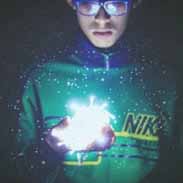Abnormal Psychology Chapter 5 – Flashcards
Unlock all answers in this set
Unlock answersquestion
"Phobic and generalized anxiety disorders arise when people stop looking at themselves honestly and with acceptance and instead deny and distort their true thoughts, emotions, and behavior." This explanation for anxiety disorders would most likely be offered by:
answer
D. humanistic theorists.
question
One procedure used to treat phobic disorders involves having the therapist confront the feared object or situation while the fearful client observes. This is called: A. systematic desensitization. B. implosive therapy. C. modeling. D. flooding.
answer
C. modeling.
question
Which of the following is a nondrug biological treatment for anxiety that is in general use today? A. rational-emotive therapy B. behavior modification C. psychoanalysis D. relaxation therapy
answer
D. relaxation therapy
question
The therapy for generalized anxiety disorder developed by Albert Ellis is called: A. stress inoculation training. B. behavior modification. C. self-instruction training. D. rational-emotive therapy.
answer
D. rational-emotive therapy.
question
What type of drug is alprazolam (Xanax)? A. major tranquilizer B. benzodiazepine C. antidepressant D. antipsychotic
answer
B. benzodiazepine
question
In modeling, the client: A. imagines himself or herself confronting the feared object. B. confronts the feared object directly. C. imagines the therapist confronting the feared object. D. observes the therapist confronting the feared object.
answer
D. observes the therapist confronting the feared object.
question
Devon is being treated for anxiety. He is connected to an instrument that records muscle tension. His job is to try to reduce muscle tension. This is an example of: A. biofeedback training. B. relaxation training. C. self-instruction training. D. EMG training.
answer
A. biofeedback training.
question
Rosa's heart was racing (from the 4 cups of coffee she had just finished), but she thought she might be having a heart attack. Her fear seemed to be increasing without end. This might be the beginning of a: A. specific phobia. B. social phobia. C. manic episode. D. panic attack.
answer
D. panic attack.
question
Behaviorists believe that compulsive behavior: A. is reinforced because engaging in it reduces anxiety. B. originally is associated with an increase in anxiety. C. is exhibited by everyone. D. is logically rather than randomly connected to fearful situations.
answer
A. is reinforced because engaging in it reduces anxiety.
question
According to "intolerance of uncertainty theory," those with generalized anxiety disorder are: A. likely to overestimate the chances that any negative event will occur. B. only able to tolerate uncertainty in severely threatening events. C. likely to underestimate the chances that any positive event will occur. D. only able to tolerate uncertainty in mildly threatening events
answer
A. likely to overestimate the chances that any negative event will occur.
question
People with one anxiety disorder are most likely to: A. experience only that one anxiety disorder. B. experience hallucinations. C. experience another anxiety disorder, too. D. experience another nonanxiety disorder.
answer
C. experience another anxiety disorder, too.
question
Jan is very fearful of speaking in public and will do everything she can to avoid that behavior. If her fear is judged to be phobic, the most accurate diagnosis would be: A. narrow social phobia. B. agoraphobia. C. broad social phobia. D. specific phobia.
answer
A. narrow social phobia.
question
According to Freud, obsessive-compulsive disorders have their origin in the ______ stage of development: A. phallic. B. anal. C. oral. D. genital.
answer
B. anal
question
Which of the following is an anxiety disorder? A. major depression B. schizophrenia C. bipolar disorder D. obsessive-compulsive disorder
answer
D. obsessive-compulsive disorder
question
"Everyone has intrusive and unwanted thoughts. Most people ignore them. But some people blame themselves and expect terrible consequences, so they act in ways they hope will neutralize the thoughts." The type of theorist most likely to agree with this quote would be a: A. cognitive theorist. B. psychodynamic theorist. C. behaviorist. D. biologist.
answer
A. cognitive theorist
question
Fear differs from anxiety in that: A. anxiety is to an interpersonal threat and fear is to an inanimate threat. B. anxiety is more likely to lead to aggression than is fear. C. fear is to a specific threat and anxiety is more general. D. anxiety is an immediate response; fear is more vague.
answer
C. fear is to a specific threat and anxiety is more general.
question
If you were afraid of dogs and your therapist treated you by interacting with dogs while you watched, you would be receiving: A. flooding. B. biofeedback. C. modeling. D. systematic desensitization.
answer
C. modeling.
question
Sam can't leave for work without going back into his house and making sure that he has taken all of his writing materials. He does this several times before he allows himself to start the car and drive to work. He is frequently late for work because he is so unsure about remembering everything. Sam is displaying: A. agoraphobia. B. nonpathological caution. C. an obsession. D. a checking compulsion.
answer
D. a checking compulsion.
question
Which theoretical position explains the origin of phobias as due to classical conditioning? A. sociocultural B. behavioral C. biological D. psychodynamic
answer
B. behavioral
question
Which theory states that people develop generalized anxiety disorders because they failed to receive unconditional positive regard as children and evaluate themselves with conditions of worth? A. Freud's psychoanalytic theory B. Pavlov's conditioning theory C. Ellis's rational-emotive theory D. Rogers's client-centered theory
answer
D. Rogers's client-centered theory



